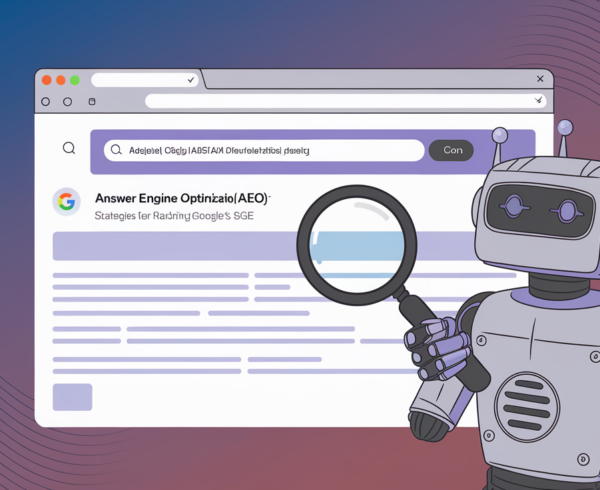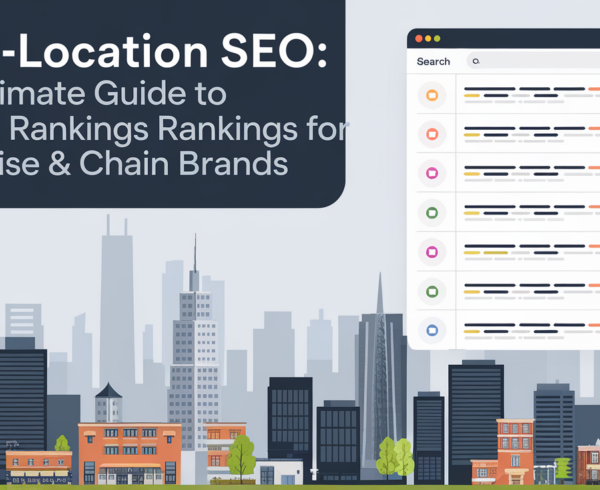Introduction
In the world of SEO, change is the only constant. One of the most transformative shifts in recent years has been the rise of conversational search. From voice assistants like Siri, Alexa, and Google Assistant to AI-driven chatbots like ChatGPT, the way users interact with search engines is evolving. No longer are users simply typing keywords into a search bar—they’re speaking to their devices, asking questions in natural language, and expecting immediate, conversational answers.
For businesses, this presents both challenges and opportunities. How do you optimize your content to rank in voice search? How can you ensure your website is ready to meet the demands of conversational search interfaces? In this article, we’ll explore the rise of conversational search, discuss how to optimize for it, and provide actionable strategies to ensure your business is positioned for success in the AI-powered search landscape.
Conversational Search: A Shift in User Behavior
The way people search is changing. Thanks to voice assistants and AI-driven chatbots, users are now speaking to their devices in a more natural, conversational tone. Instead of typing in short phrases like “best Italian restaurants near me,” users might say, “Hey Siri, where can I find the best Italian food around here?”
This shift to conversational search is partly due to the growth of voice-activated devices like Amazon Echo, Google Home, and Apple’s Siri, but also due to the increasing popularity of AI-powered chatbots. Services like ChatGPT, Google’s Assistant, and Bing’s AI Chat offer users a more personalized, conversational approach to searching for information. These systems are designed to understand context and intent rather than just matching keywords, and they can deliver more natural language responses to user queries.
This shift is significant because it alters how businesses should approach SEO. As traditional SEO practices focused on keyword-driven queries, conversational search introduces a new dynamic: long-tail keywords, natural language processing (NLP), and user intent are now more critical than ever.
How Conversational Search Impacts SEO
To succeed in this new world of AI-driven search, businesses must adapt their SEO strategies to account for the conversational nature of these queries. Here are some key ways conversational search is influencing SEO:
1. Natural Language is King
Search queries are becoming more like questions that a user would ask another person. Instead of typing a phrase like “best restaurants in New York,” users might ask, “What are the best restaurants in New York for Italian food?” This means that search engines are now placing greater emphasis on understanding natural language and context.
AI-powered search engines and chatbots rely heavily on Natural Language Processing (NLP) to decipher what users mean, not just what they type. This makes it essential for businesses to optimize content for conversational search. Simply using short keywords isn’t enough anymore; you need to consider how users would phrase their queries in a natural, spoken conversation.
Actionable Tip
To optimize for conversational search, focus on long-tail keywords and question-based queries. For example, instead of just targeting “best Italian restaurants,” you might target “What are the best Italian restaurants in New York with outdoor seating?” Consider the types of questions your target audience is likely to ask, and integrate those naturally into your content. Adding FAQs to your content can be a great way to do this.
2. Featured Snippets & Position Zero
As more users turn to voice search and chatbots for quick answers, featured snippets have become even more important. These “position zero” results are the highly visible snippets of content that appear above the regular search results. They often provide immediate answers to user queries, such as definitions, lists, or step-by-step instructions.
Voice assistants like Google Assistant often pull answers directly from these featured snippets, and they’re becoming increasingly important for businesses looking to capture visibility in AI-powered search environments.
Actionable Tip
To optimize for featured snippets, identify the questions your target audience is asking and structure your content to answer those questions clearly and concisely. Use bullet points, numbered lists, and short, direct answers in your content to increase your chances of being selected for featured snippets.
3. Mobile Optimization for Voice Search
Voice search is often used on mobile devices, and it’s expected to make up a significant portion of all searches in the near future. In fact, mobile voice searches are growing by double digits every year. This makes it even more important for businesses to ensure that their websites are mobile-friendly and optimized for voice search.
Voice searches tend to be more focused on local queries, with users often asking for directions, store hours, or nearby services. This shift to local search means that local SEO has become more critical than ever.
Actionable Tip
Make sure your website is fully mobile-optimized, as many voice searches are conducted on smartphones. Google My Business optimization and ensuring that your business is listed on local directories are essential steps in optimizing for local voice search. Additionally, ensure your site is fast, mobile-friendly, and responsive to accommodate users on all devices.
4. User Intent is More Important than Keywords
In the world of conversational search, user intent takes center stage. Rather than focusing on exact keywords, search engines powered by AI are more concerned with understanding the intent behind the query. Is the user looking for a product to buy? Are they seeking an answer to a specific question? Are they just browsing?
Voice search is often used for transactional and navigational queries, with users wanting immediate answers or to take action quickly. For example, if a user asks, “Where can I buy a laptop near me?” they’re likely ready to make a purchase. On the other hand, if a user asks, “What’s the best laptop for gaming?” they might still be in the research phase.
Actionable Tip
To capture voice search traffic, you need to focus on understanding and catering to user intent. Create content that addresses specific needs and answers common questions related to your product or service. Use conversational language, and ensure your content clearly addresses whether users are seeking answers or ready to make a decision.
Best Practices for Optimizing for Conversational Search
Now that we’ve covered the key factors impacting conversational search, let’s look at best practices for optimizing your website to meet the demands of voice assistants and AI chatbots:
1. Use Structured Data and Schema Markup
As AI-driven search engines and chatbots rely on structured data to understand content, adding schema markup to your site is critical. Structured data provides search engines with additional context, allowing them to better understand your content and present it in a way that’s useful to users.
For example, adding FAQ schema can help Google and other search engines pull direct answers to questions asked through voice search.
2. Optimize for Local SEO
Since many voice searches are location-based, optimizing your site for local SEO is essential. Ensure that your business is listed on Google My Business, has consistent NAP (Name, Address, Phone) information across directories, and uses local keywords to improve visibility in local search results.
3. Focus on Conversational Content
To capture voice search traffic, create content that mirrors how people speak. Use a more natural tone, and answer questions directly. Avoid overly technical jargon, and keep your sentences clear and concise. Structure your content in the form of questions and answers to align with the conversational nature of voice search.
4. Enhance Mobile Experience
Voice search is often used on mobile devices, so ensuring your website is mobile-optimized is non-negotiable. Improve page speed, ensure responsive design, and streamline user experience to cater to mobile users who are using voice search on the go.
Conclusion: Navigating the Future of Conversational Search
Conversational search is not a trend—it’s a seismic shift in how users interact with the web. For any SEO agency looking to future-proof its clients’ strategies, optimizing for natural language, local intent, and AI-enhanced SERPs is now essential.
The future of search is conversational, and those who embrace this shift will be well-equipped to capture new opportunities and drive more qualified traffic to their sites. In the next article, we’ll explore the role of AI-powered content creation and how businesses can scale their content production while maintaining quality. Stay tuned as we continue to dive into the future of SEO!






